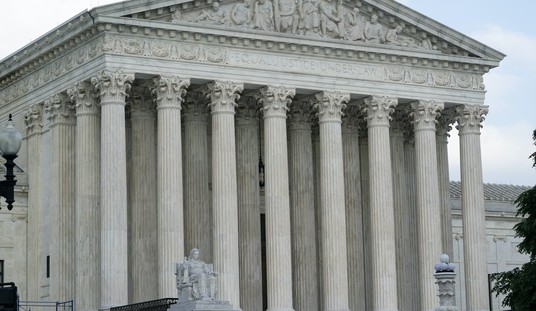For a political movement that prides themselves in being reality based, there is probably no group more susceptible to wish-casting and the use of Martian logic than the left. Hillary Clinton’s loss to Donald Trump has created an industry about the ridiculous idea that Russian hancking or fake news was the reason for her loss. What has left them totally unhinged, though, is the fact that Merrick Garland will never have a seat on the US Supreme Court. In the view of the left, that seat was “Obama’s” and he was personally and unconstitutionally cheated by McConnell’s refusal to allow a confirmation vote. (Funny how the possession of Supreme Court seats works for the left. When Thurgood Marshall retired that seat was not seen as “Bush’s” seat bit as “the African American” seat and was expected to be filled with another black jurist. By that same logic, “Scalia’s” seat should be filled by a practicing, orthodox, Catholic conservative who believes in limited government and faithfully interpreting the text of laws.)
The first wave of stupidity hit when a genuine moron writing at Daily Kos (I know, that doesn’t narrow the field of suspects down very much) came up with the idea that there was actually a period of time in which the Democrats held a majority of Senate seats (due to the newly re-elected Senators not being sworn in) and Joe Biden could seize the reins of power and confirm Garland to a lifetime position on the Supreme Court. So many lawyers died laughing that Waldman could have been indicted on felony murder charges in a majority of the states in the Union.
Now the prevailing wisdom is that there is a brief time between when the current Congress will expire and the new one will convene that will create the opportunity for a recess appointment. There are a multitude of problems with this idea, not the least of which is that the Senate is remaining in pro forma session which means there will be no actual recess.
This is the new big idea:
Some progressive activists and commentators are understandably frustrated that the Senate refused to consider President Obama’s nomination of Merrick Garland to the Supreme Court. Some sued (making borderline frivolous claims). Others argued that Obama could simply appoint Garland without Senate consent. The problem, in both cases, is that the Senate has no constitutional obligation to consider a president’s nominees. While prior Senates largely used this power to withhold consent for lower court or executive branch nominees (leaving some judicial nominees in limbo even longer than Garland), there is no constitutional reason to treat a Supreme Court nomination differently.
Since the election, some are advancing a new strategy to place Garland on the high court: a recess appointment. This idea was floated by David Dayen in New Republic in November and endorsed this week in New York magazine by Ed Kilgore. The problem with this idea, however, is that it is clearly precluded by Supreme Court precedent and, even were this not the case, would be entirely fruitless (although not for the reasons Dayen and Kilgore suggest).
Dayen and Kilgore suggest that Obama could recess-appoint Garland to the Supreme Court (and other nominees to lower courts) on Jan. 3 during the short recess between the 114th and 115th Congresses. This intersession recess may be infinitesimally short — perhaps no longer than the time between two swings of a gavel — but (the theory goes) must exist as there must be some amount of time between the end of one session and the start of the next.
The idea here is not new. President Theodore Roosevelt used this intersession recess to make numerous recess appointments in 1903. The practice was never repeated, however, and the theory upon which TR’s actions were based were largely disavowed by subsequent administrations.
Either Dayen and Kilgore are morons (I’m open to this explanation) or they are just agitating their dimbulb readers for the sake of generating clicks (the more likely explanation). Their theory, if we can call such lunacy a theory, is factually impossible:
The real problem with trying to make such an intersession recess appointment is that the Supreme Court has held that such an appointment would be unconstitutional in Noel Canning v. NLRB. Dayen and Kilgore purport to address Noel Canning — claiming it does not apply since the case concerned only intrasession recess appointments — but they ignore what Justice Breyer’s opinion for the court actually says. As Seth Barrett Tillman points out, Noel Canning clearly precludes such an appointment. From Justice Breyer’s opinion:
we conclude that the phrase “the recess” applies to both intra-session and inter-session recesses. If a Senate recess is so short [i.e., less than 3 days] that it does not require the consent of the House, it is too short to trigger the Recess Appointments Clause. See Art. I, § 5, cl. 4. And a recess lasting less than 10 days is presumptively too short as well.
If a three-day recess is too short, a three-second recess would certainly be as well and, contrary to Dayen’s and Kilgore’s suggestion, Justice Breyer’s opinion makes no distinction between intrasession and intersession recesses. All told, every justice on the court embraced an opinion rejecting the idea that such an intersession recess appointment would be constitutional.
(If a recess appointment is made it is only valid for the term of that Congress. Logically, this recess appointment would have to take place before the new Congress is sworn in and would terminate in only a few seconds, but whatever, we are dealing with leftists talking political strategy, we’re not dealing with actual facts.)
The article goes on to say that even if everyone is right about this, it still doesn’t matter:
All that the Senate would need to do is end its next session by adjourning sine die and Garland’s term would end. This is because, under the Constitution’s Recess Appointments Clause, such appointments terminate at the end of the next Senate session. Adjourning sine die would require the cooperation of the House and a president’s signature, but that would be no obstacle come Jan. 20. In other words, Congress could terminate any recess appointment made by Obama in less than three weeks.
After getting a good laugh out of this, it occurred to me that the most elegant solution for the GOP is to encourage Obama to make that recess appointment. That creates a vacancy on US Court of Appeals for the D.C. Circuit. The Senate should confirm a nominee to that position after Trump is sworn in, then declare itself to have adjourned, and boot Garland from the Supreme Court concurrent with that adjournment. And from the D.C. Circuit, as well, because there would be no vacancy there.














Join the conversation as a VIP Member